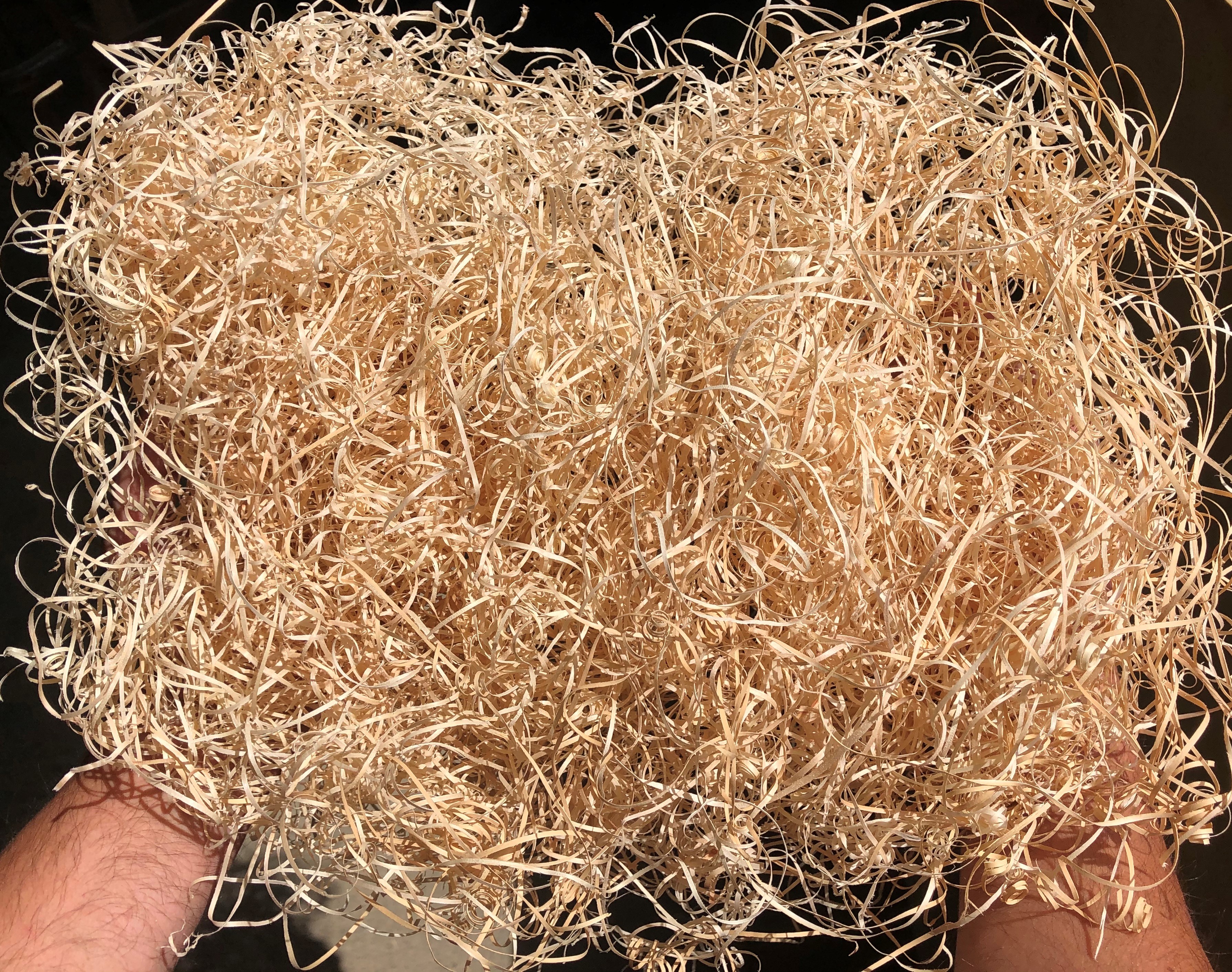
Don’t be fooled by its simplicity. There’s an awful lot more to wood wool than meets the eye.
Though we concede that what does meet the eye is certainly pretty. It’s that material that looks like straw in luxury hampers and champagne presentation boxes – except it’s not straw. It’s handfuls of very fine, very long wood shavings. The Americans call it Excelsior; here in the UK it’s wood wool.
We’ll get onto its surprising versatility shortly. But it probably is as a packaging material that it’s best-known. And it’s also as a packaging material that we think it’s got a particularly big future. The reason? It’s 100% natural.
Surveys tell us that the protective packaging industry is booming – but that it’s also transforming. Not only are more and more of us buying things online, we’re finding increasingly responsible ways of keeping our purchases safe in transit. Manufacturers of bubble wrap and polystyrene peanuts are doing their best to make those materials recyclable so they don’t end up in landfill. But, for a growing number of us, a completely biodegradable product is the only acceptable way forward.
Wood wool is one of those products. And it’s already a firm favourite for certain types of package, especially in the food and drink industry. It looks great with real outdoor produce, like fresh fruit, and suits anything hand-crafted, like soaps or ceramics. It feels retro and contemporary at the same time. People talk these days about the ‘unboxing’ experience – that thrill of opening a beautiful package where every element has visual appeal. Wood wool plays a big part in those experiences.
There’s another way in which wood wool is helping the environment that you might not realise. Manufacturing this product actually improves the health of the forests that the wood comes from. That’s because woodlands, like our neighbouring Leighton Estate, benefit from thinning. If they grow too densely, trees end up being uniformly underdeveloped. You need to make sure they have enough space and light of their own to achieve the right, healthy stature. So cutting down some trees for timber and timber products leaves a better forest behind.
If, by the way, you were to follow some of that timber just a few miles down the road to our workshop (again: small carbon footprint. You’ll have guessed by now how we feel about the environment.) you’d see how we make our wood wool. Imagine short sections of debarked tree trunk fixed in place over razor-sharp lathes shuttling back and forth across the undersides. It’s a bit like watching giant cheese-graters at work (the fine shavings that pile up underneath even look a bit like parmesan).
And that’s about it. We can vary the grade of shredding (from 0.35mm to 0.05mm), and it’s always dried to make it light and fluffy, it really is that natural.
But back to how useful the product is – and how there’s much more to it than just packaging.
It’s perfect for animal bedding. Whether for the hamster cage or kennels and catteries – or even the local safari park – it’s a lot better than straw or hay. It’s got volume and sponginess for warmth; it’s highly absorbent (because of the drying); it’s clean and dust-free; and it’s long-lasting. Animals like playing with it; they love to make nests and dens out of it and to forage through it for treats.
Then there’s the really big beasts: teddy bears. Toy stuffing was one of the very first uses of wood wool back in the nineteenth century (when it was also used to stuff quilts – not, perhaps, the first thing we’d recommend it for these days). But if you’ve ever seen the Two Bear Ladies on BBC One’s Repair Shop (they’re customers of ours), you’ll know that the tradition continues to this day. What our friends in the crafting business particularly like is the way that, if you dampen little snippets of very fine wood wool and use it to fill the trickiest nooks and pockets of an antique teddy, it dries out to give a wonderfully firm, solid shape.
Some uses of wood wool you just wouldn’t guess at. Pads in evaporative air coolers, for example. Air gets cooled down in this kind of air conditioning machine by being passed through special porous pads before being pumped back out into the room; the pads work by holding onto cold water which is constantly circulated through them. Wood wool makes a good choice of material for this.
But its ultimate hidden talent has got to be for vinegar manufacture. We learned all about it from Sarson’s when they proposed we join forces (our larch wood wool from the afore mentioned Leighton Estate turned out to trump everything they’d used in the past). Apparently, the wood wool is used as a substrate for the acetobacter – or “good” bacteria that convert alcohol into vinegar. You can read about the full process here.
We could go on. Archery bales; bonded wood wool construction boards; erosion control mats. That last one is an especially neat idea. When large quantities of earth get moved around (by construction sites or road builders, for example), those new mounds, planted with grass seeds, need holding in place and protecting from the elements. Matting for the purpose has all too often been made of plastic. But make it out of wood wool – as many now do – and not only is the earth kept in place while new growth comes up from underneath, but the material naturally, over time, turns into nutritious mulch.
Which brings us back to biogdegradability and the environment.
If this whirlwind tour of our product has a takeaway theme, we’d like you to think of it as this: versatile, affordable, even nice to look at are must-have qualities, no question. But we’ve got a future to protect, too. And we think that’s the most important box we tick.